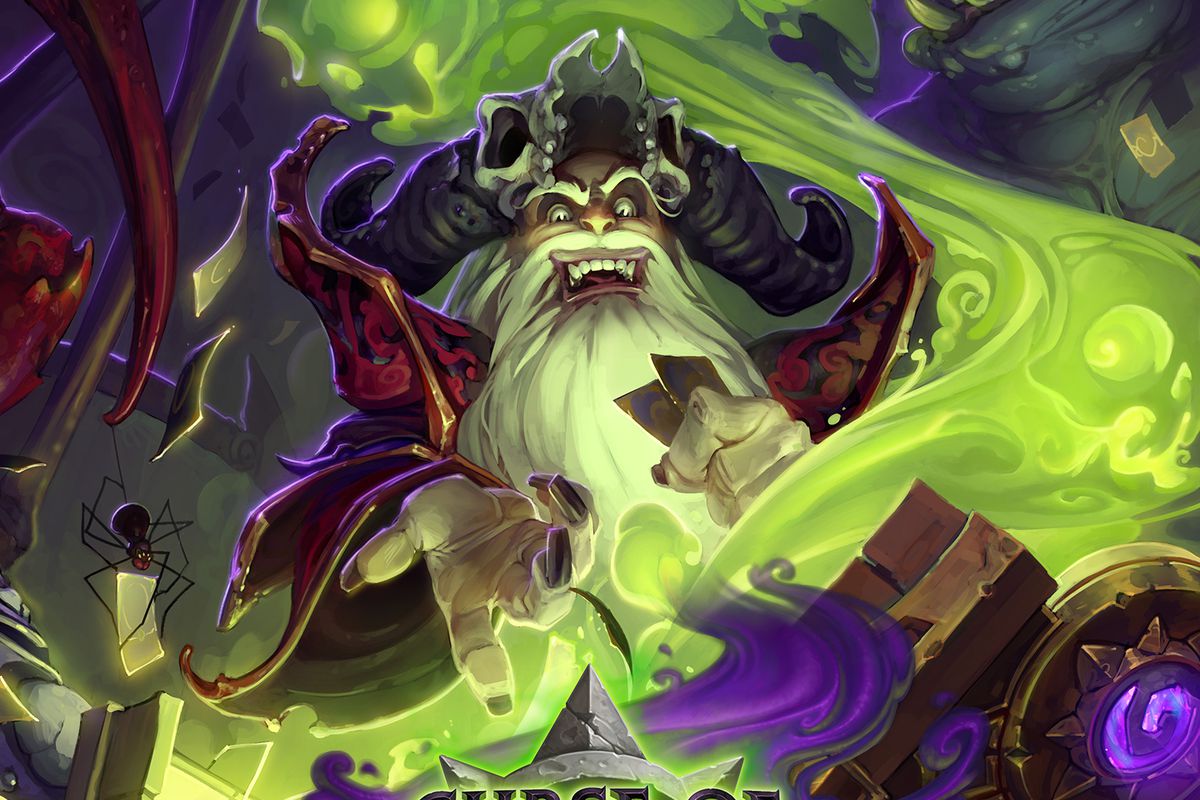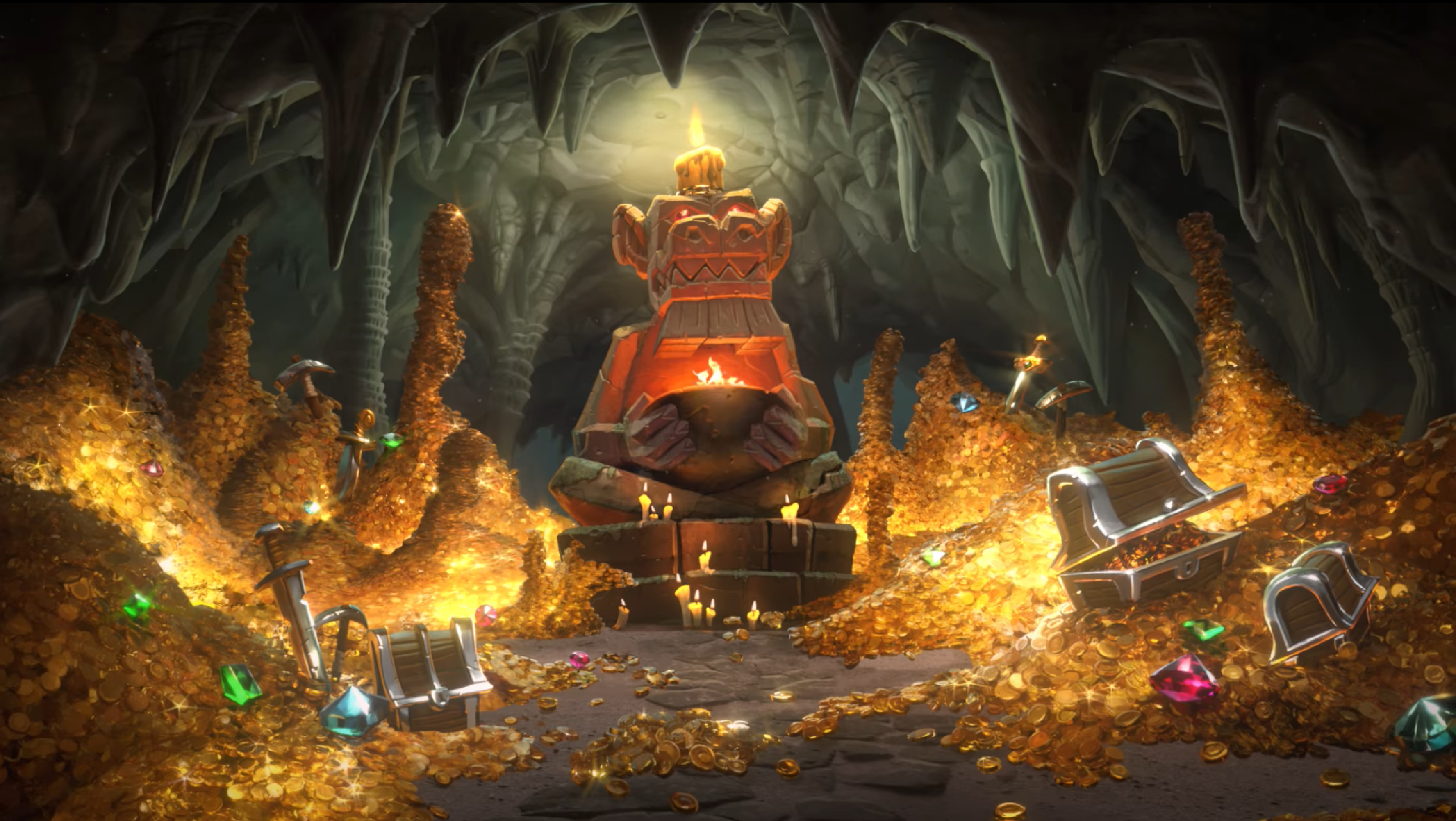Hearthstone: The Future of Single-Player Adventures
Mission designer Dave Kosak believes that Hearthstone can be an incredible vehicle for unique player stories.
The call for multiplayer-focused games to include some kind of single-player component is so loud and habitual that you’d think games that actually offer that functionality would be praised far and wide. Yet, Hearthstone’s single-player content has long been the game’s tragically unsung MVP.
In fact, the very first Hearthstone expansion, The Curse of Naxxramas, featured a lengthy single-player “adventure” campaign that sent players deeper into the halls of Naxxramas and beat bosses in order to unlock new cards. Said bosses required players to construct unusual decks designed to exploit the powers and weaknesses of their new A.I. opponents. While we’d later be treated to full Hearthstone expansions (which added about 135 cards to the game as opposed to the 40 or so in adventures), Blizzard would return to the adventure format with 2015’s Blackrock Mountain and The League of Explorers and 2016’s One Night in Kharazan.
Fans came to love adventure releases not only because they were cheaper than full expansions ($19.99 as opposed to the $49.99 card bundle pre-orders that accompany most expansions), but because they offered something different. Every week for a period of four weeks, a new wing of the adventure’s single-player mode would unlock and bring with it exciting bosses, incredible puzzles, and a small stream of new cards that everyone tried to fit into their decks. Simply put, adventure releases were a lot of fun.
That’s why so many Hearthstone fans were disheartened to learn that the studio was opting to move away from the adventure format in 2017. Instead, Hearthstone‘s Team 5 development group would release three full expansions throughout the course of the year.
However, Hearthstone’s single-player content was not meant to end there without ceremony. Team 5 revealed its intentions to include some kind of single-player component with each expansion beyond 2017’s first content release. The spirit of Hearthstone adventures would live on as a companion to more traditional expansions.
According to the game’s mission designer, Dave Kosak, that change in release structure was necessary to ensure that Hearthstone fans got the most out of the design team’s efforts.

“We were solving a couple of problems there,” said Kosak of the decision to unify Hearthstone’s release models. “What we found is that when a new full set is released, it had a big impact on the meta. It was super fun, super exciting to collect all the cards, but it was a little hard to tell the story then. You didn’t have a sense of who the characters are or where the place was. Adventures, meanwhile, did a tremendous job of setting up the characters, the mood, the place and everything, but they included significantly fewer cards. They didn’t always have the biggest impact on the meta.”
According to Kosak, Blizzard’s solution to that issue revolved around their desire to have – and give – it all.
“We really wanted to start having the best of both worlds,” said Kosak. “We wanted every release to feel alive and fresh. We wanted more full expansions every year, but we wanted to have that storytelling of adventures in there as well. Knights of the Frozen Throne was the first instance of that.”
2017’s Knights of the Frozen Throne expansion was the first to include a full collection of 135 new cards as well as a new single-player adventure. For the most part, that single-player component played out like a traditional Hearthstone adventure. Fight some A.I. bosses, learn to play around their special skills and cards, etc. However, the team knew that what had come before wouldn’t suffice when it came to designing the adventure’s long-awaited battle against the Lich King.
“I’d just come aboard the team when work began on the Knights of the Frozen Throne missions,” said Kosak. “Our whole team wasn’t really ramped up yet, but….it was the Lich King, man! You have to fight the Lich King and we had to have a big boss fight.”
The Lich King boss battle ended up actually being nine separate boss battles – one for each of Hearthstone’s classes. Depending on which class you used to battle the Lich King, he would employ a special dirty trick designed to create puzzle-like scenarios. For instance, Hunters would take damage for every minion in their deck. Mages began the fight with just a single health point to their name.
It was a challenging series of conflicts that demanded deck creation creativity and even better problem-solving skills. According to Kosak, the difficulty of these encounters can partially be attributed to the freedom offered by Hearthstone‘s new single-player format.
“One thing about the old adventures is…you purchase the adventure and now in order to get all the cards you have to beat all the content,” said Kosak. “That sort of forced us to make sure the content wasn’t too difficult and that everybody could get their cards. Now that they’re separate, we asked, ‘If we could, what would be the most challenging fight we could make?’ That was the genesis of the Lich King fight. If we’re unchained on difficulty, what could we do that would be really challenging and really fun?”
While Team 5 ultimately pulled off a Hearthstone Lich King fight that felt appropriate to the mythical status of that character, the team still felt that more could be done with the game’s missions beyond the tried-and-true series of specialized boss encounters.
“That format works really well for telling a story,” said Kosak of the old-school Hearthstone adventures. “When we’re creating an adventure like that, though, we spend a lot of time creating these adventures, recording all these wonderful voiceovers, bringing in all this great art, and then players would blast through it really fast. That’s when we stepped back and said, ‘If we were to use these development resources, could we make something that is a little more replayable?’ Something that gave you more to do and more bang for your buck.”
That desire became the foundation of Kobolds and Catacombs‘ Dungeon Run mode. Dungeon Run is a brilliant little twist on the roguelike genre that tasks you with beating a series of randomized encounters and building your deck with cards and abilities you earn from your victories along the way. When you lose, you lose the deck you’ve built so far and must begin again.
Dungeon Run’s exceedingly clever twist on the roguelike formula makes Hearthstone feel like an entirely new game. That transformation required Team 5 to figure out why roguelikes work and how they can work within Hearthstone.

“We studied roguelikes extensively because we really enjoyed all of those games,” said Kosak. “It turns out that when you say roguelike it’s really just shorthand for design decisions that are related and inherently work out well together. There’s some sort of procedural content and these sort of spikes in difficulty. That’s what leads to these great stories and what makes a roguelike so interesting. That’s what we set out to do with the Dungeon Run.”
When it came to the seemingly impossible task of making a chaotic mode feel relatively balanced, the developers found a surprisingly elegant series of solutions.
“It turns out Dungeon Run wasn’t that hard to balance,” said Kosak. “What we found early on, and we were worried about this, is that if a boss is really difficult, we could just move it later in the dungeon. If a boss turned out to be easy, we just moved it earlier in the dungeon. The difficulty spaced itself out that way and it worked really well. I think in the end, we found a really good balance. It is very challenging, but occasionally you get these runs where you’re the monster of the dungeon. It makes a great story, and that’s what we’re aiming for.”
Along with its depth and wonderfully chaotic nature, Dungeon Run is notable for its generosity. It allows players to utilize not only cards included in the Kobolds & Catacombs expansion but cards from every other major release as well. That ability for all players to try new cards regardless of whether they opened them in packs is something the mission team wants to continue offering in the future.
“It’s one of the goals of the mission team to expose you to the new mechanics of the set,” said Kosak. “With Frozen Throne, we introduced you to the idea of your hero becoming a death knight, then gave you a death knight card. Here’s the story behind it, here’s the new thing, check out the new hotness. What I like about Dungeon Run is that it’s not just the new Kobolds and Catacombs cards but also key mechanics from lots of other sets so that you kind of get the grand tour of what Hearthstone has been up to. It’s great for returning players who may have missed recent expansions.”
Even though Dungeon Run is deep and entertaining enough to be its own game, Kosak warns that it will likely be forever tied to the Kobolds and Catacombs expansion and that we shouldn’t expect to see it updated in the near future. However, there is hope that the idea itself won’t end there.
“Now that we’ve created that roguelike format and we have the UI for it, that’s really cool for us,” said Kosak. “Our goal with the mission team is we really want to keep surprising players by giving them new things to experience with the lore and theme of each expansion. We have a couple of ways we want to do that and we’ll keep experimenting, but it’s a popular format and I’m certain you’ll see it again in the future in one way or another.”
As for what players can expect from the next Hearthstone expansion’s solo adventure, Team 5 isn’t quite ready to say. However, Kosak did share what the team hopes to accomplish with the next release.
“I guess I’d use the word whimsical,” said Kosak. “That doesn’t mean the theme necessarily, but just that sense of fun that makes you go ‘What was that, I’ve never played Hearthstone like that before.’”
Hearthstone’s latest expansion, Kobolds and Catacombs, is out now.
